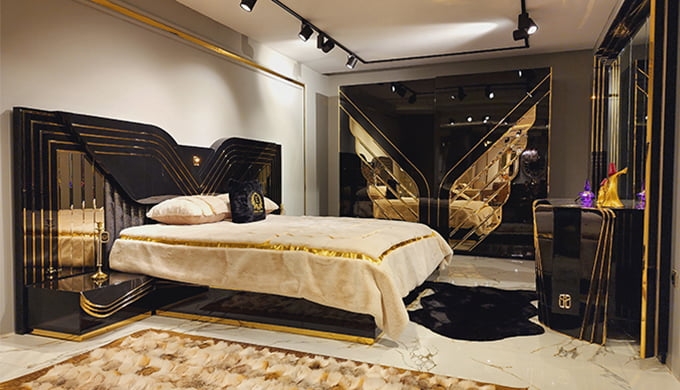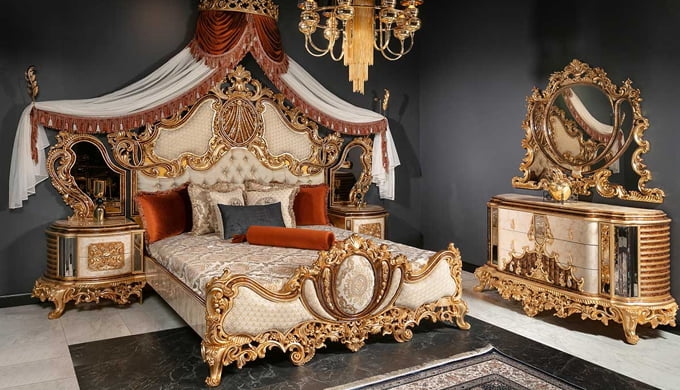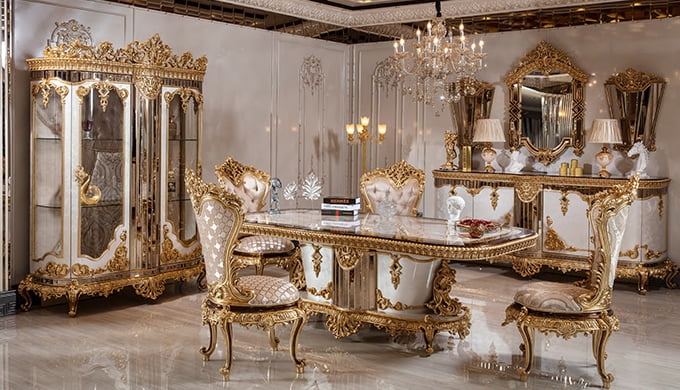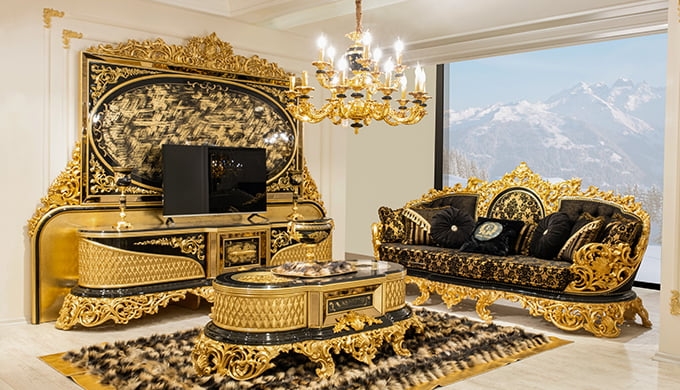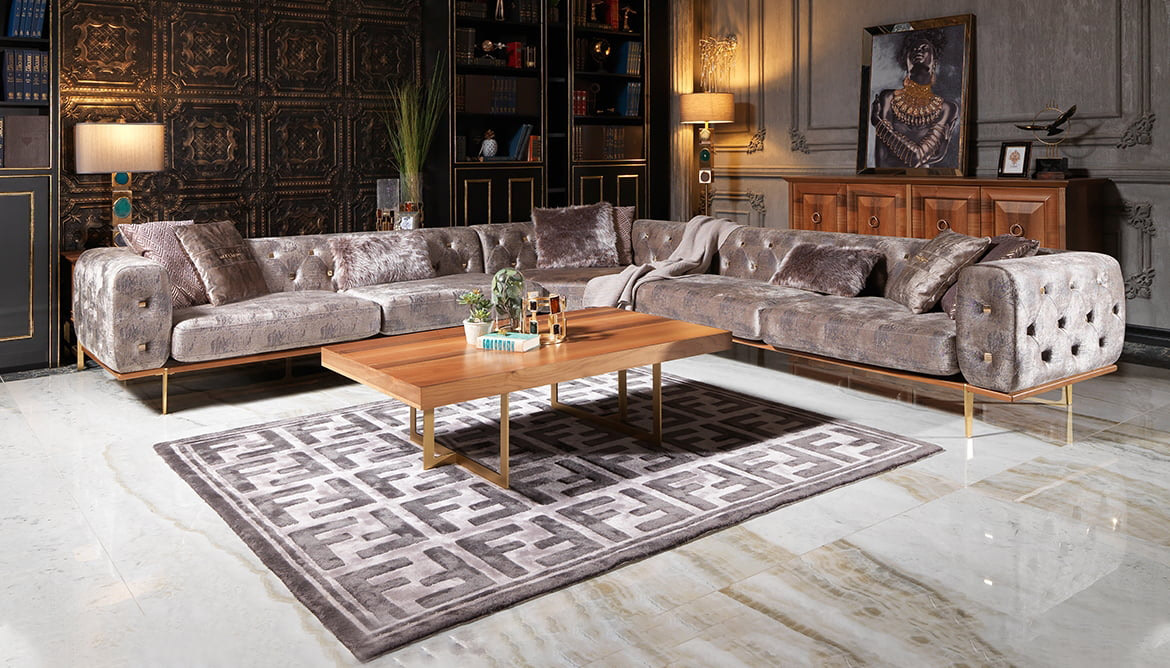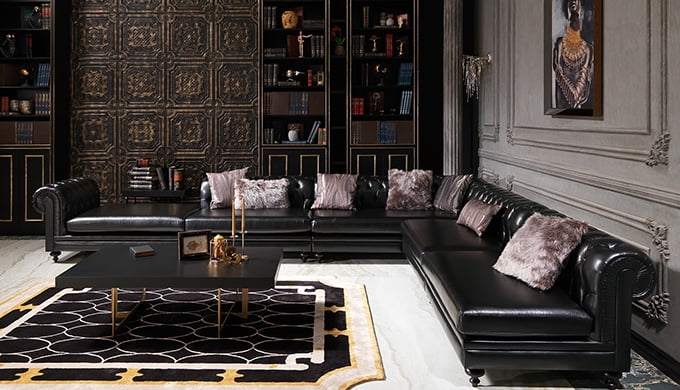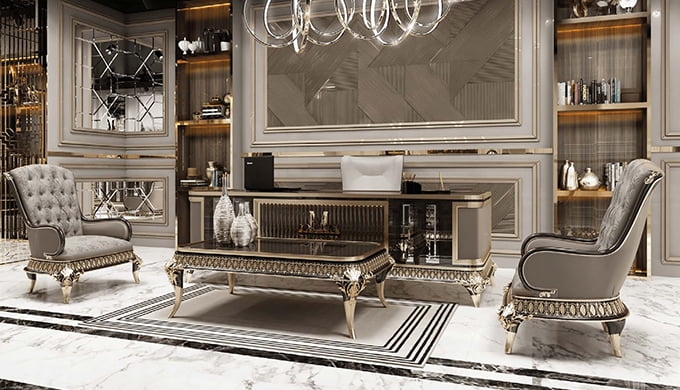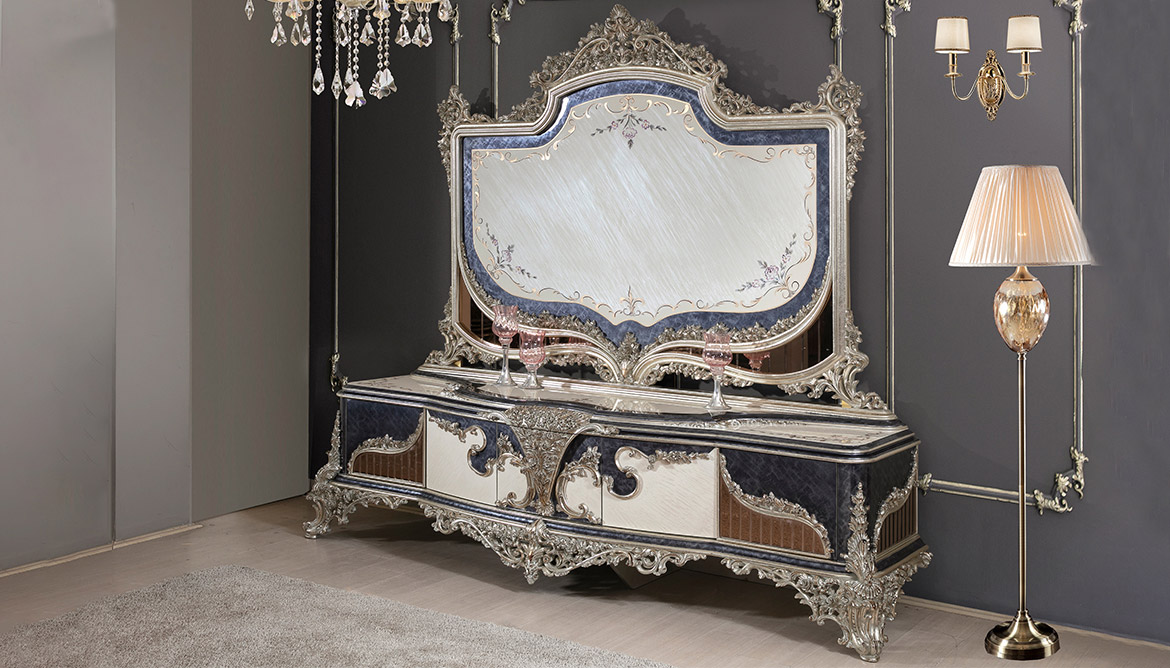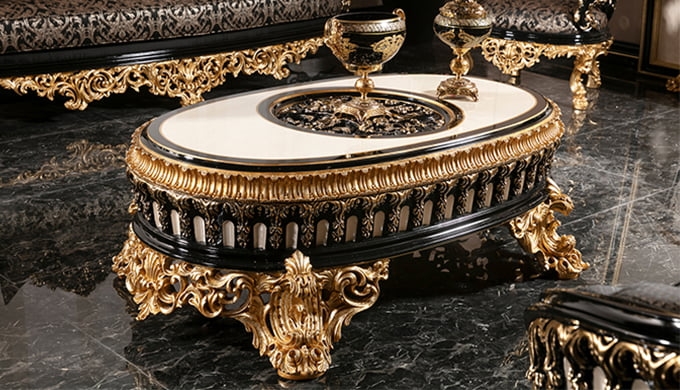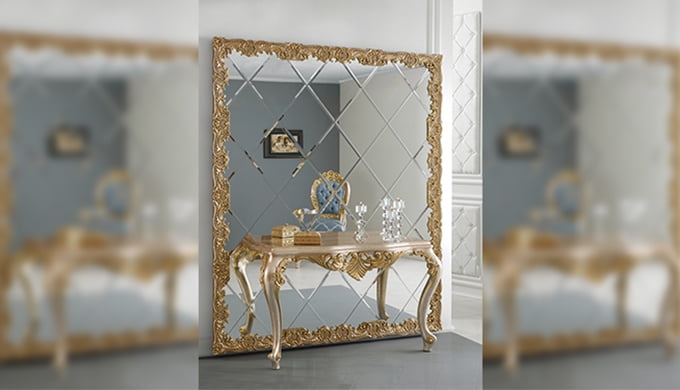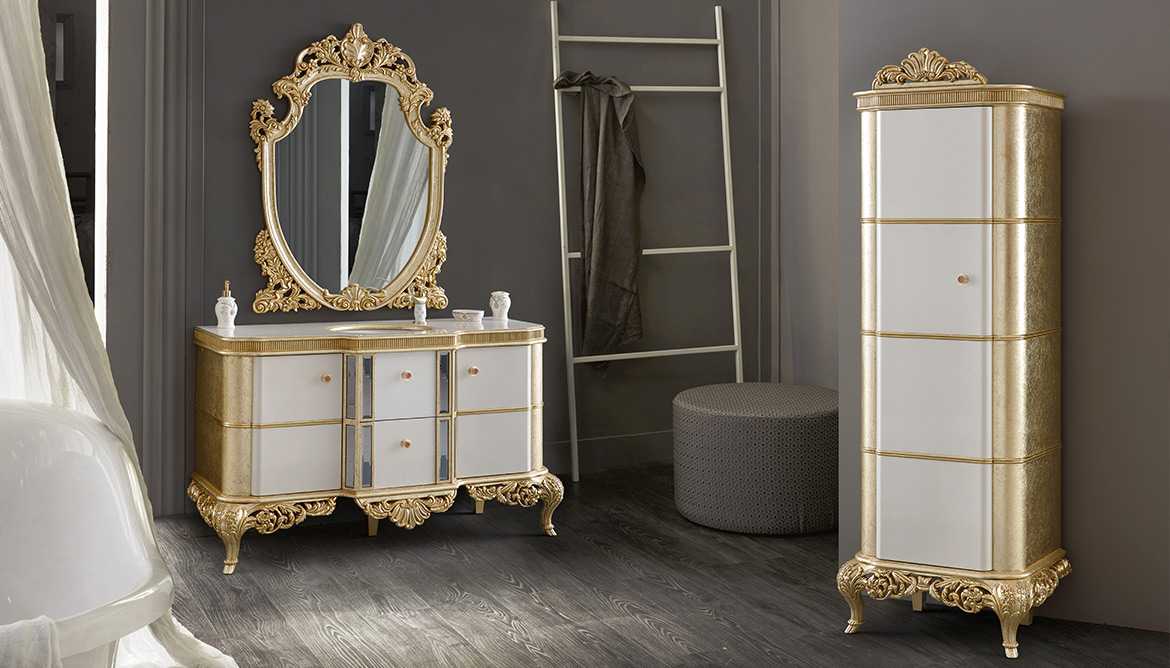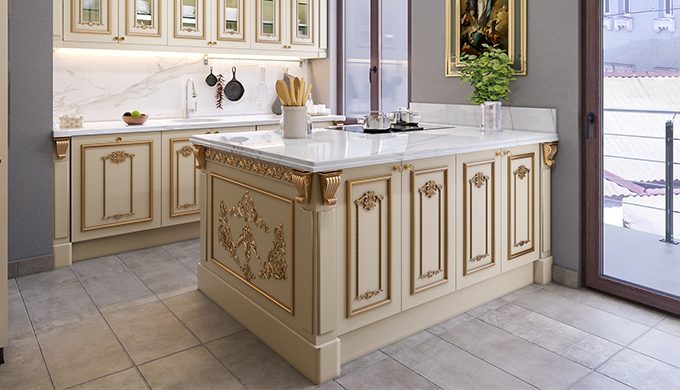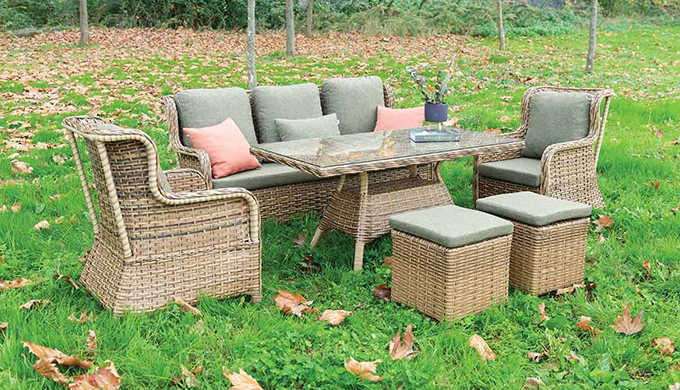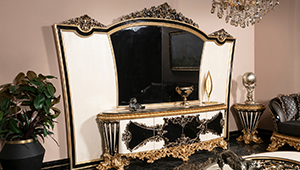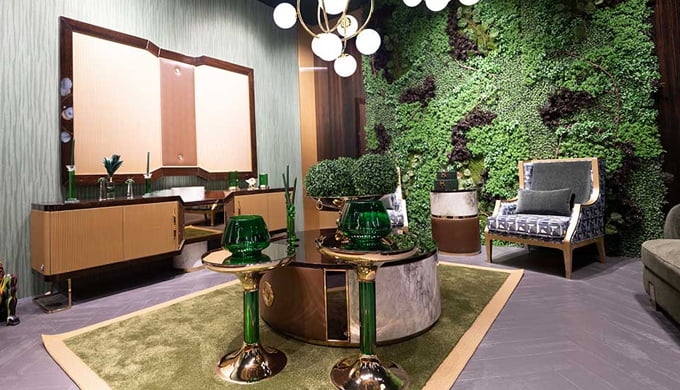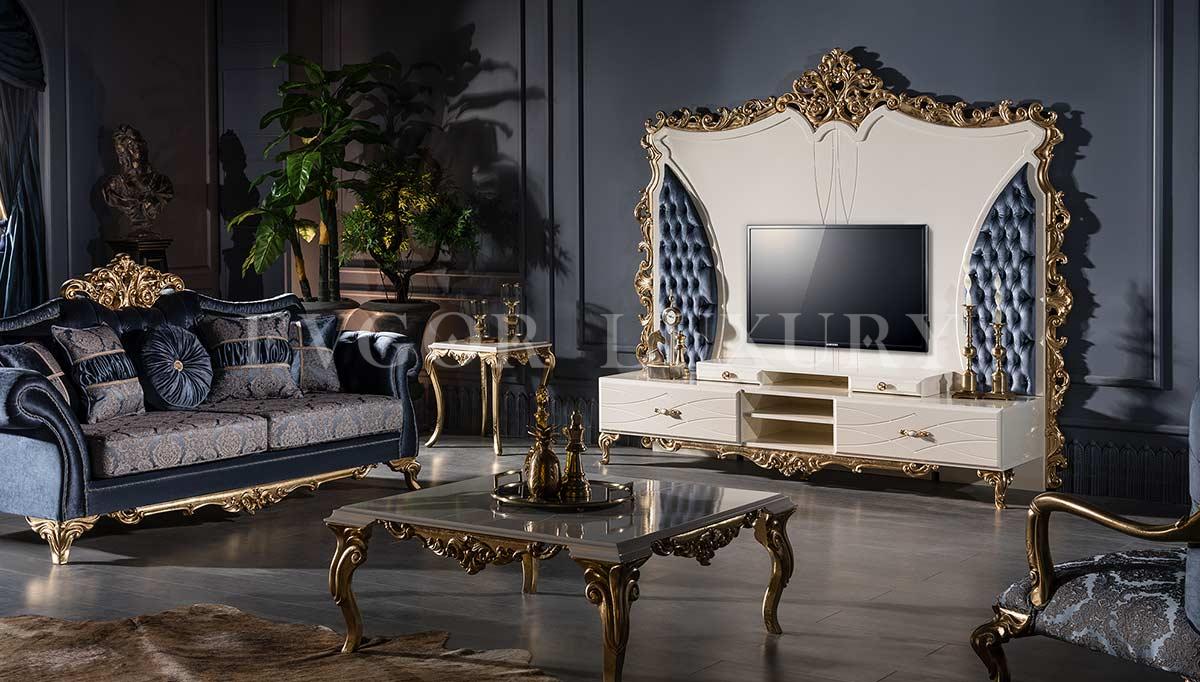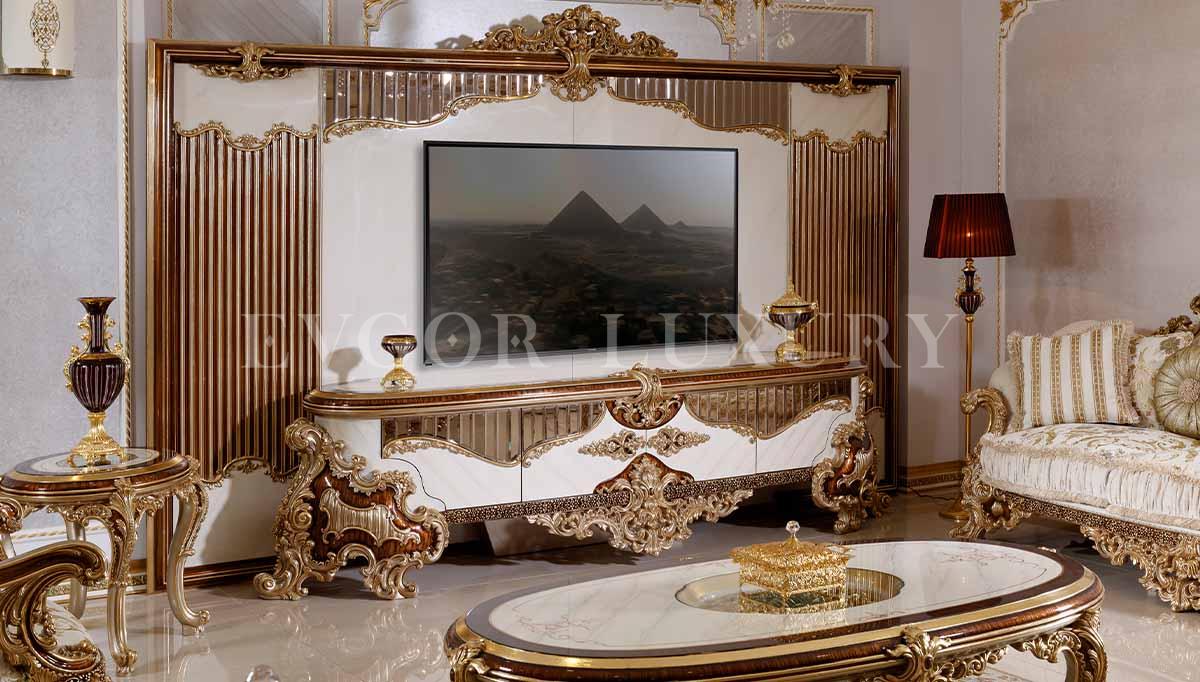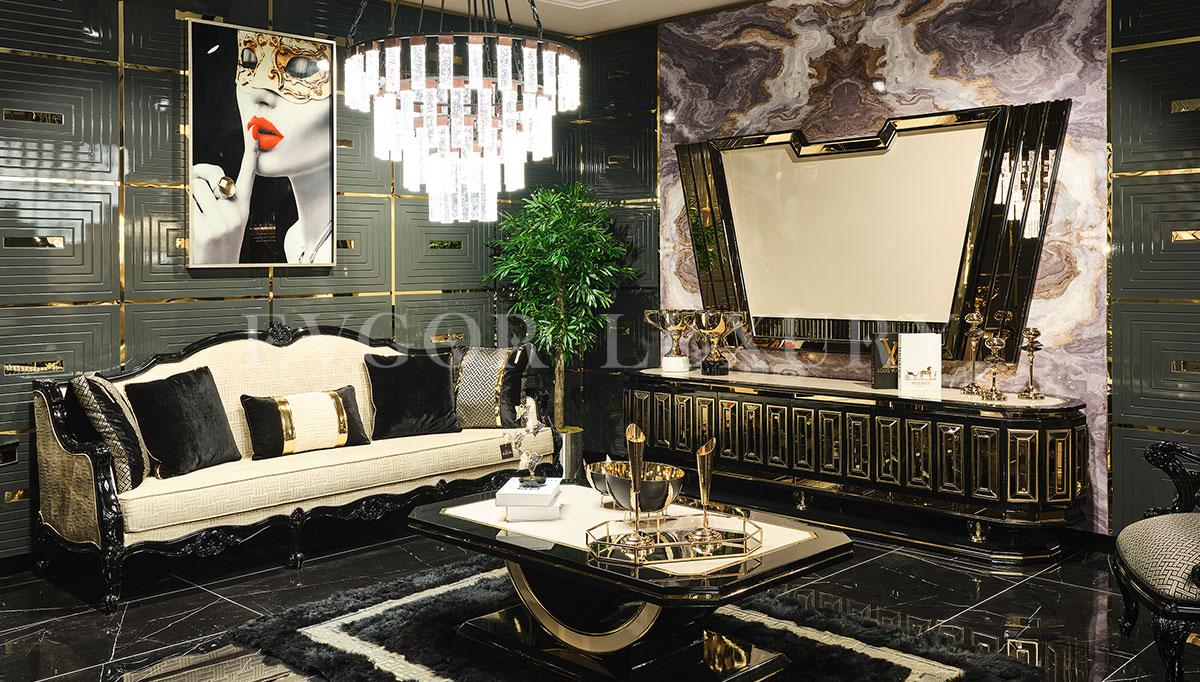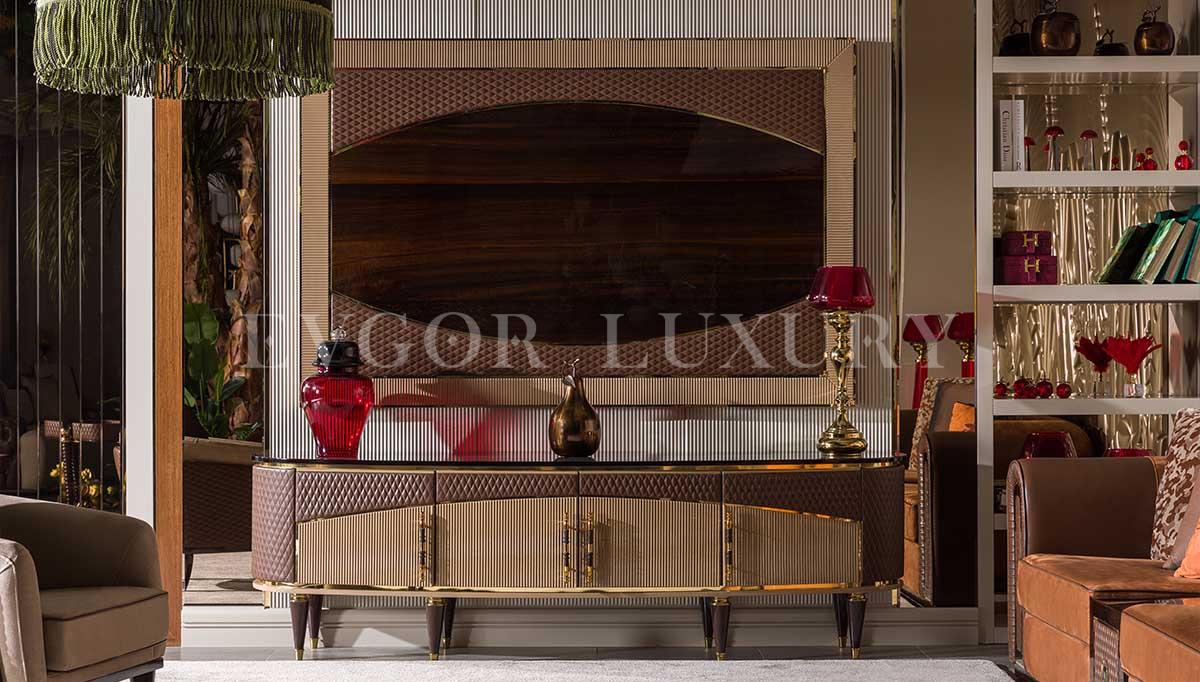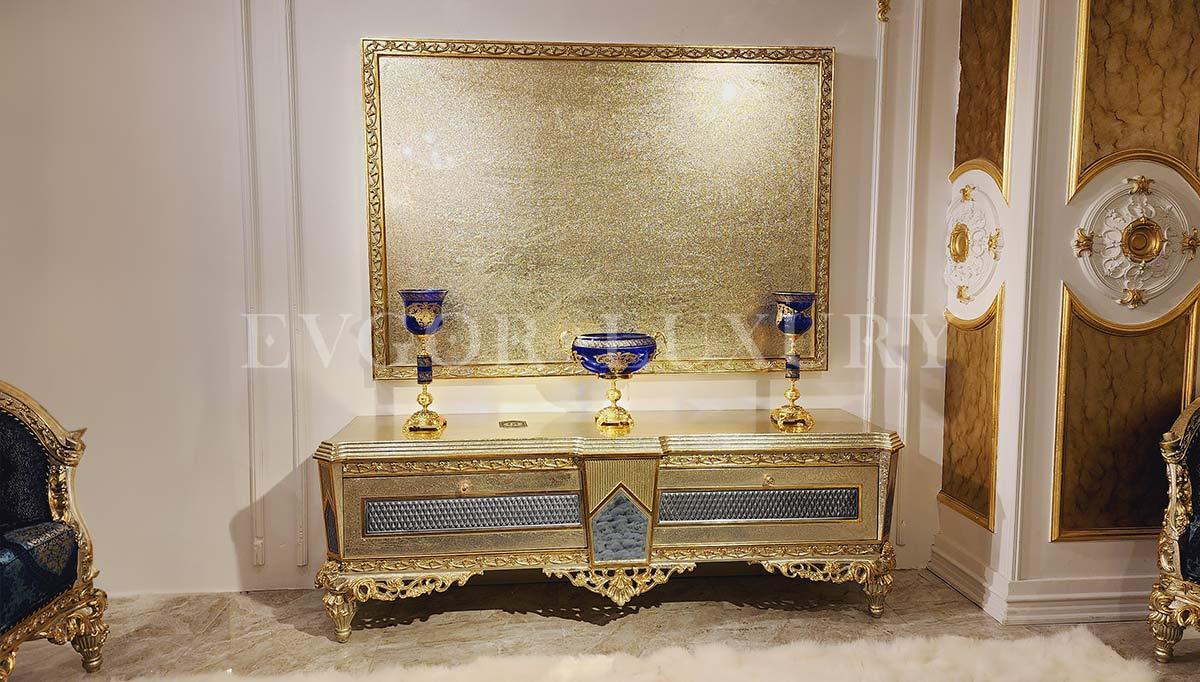TV Units
TV Units
TV units, also known as TV stands or entertainment centers, are furniture pieces designed to support and organize television sets and related media equipment. They come in various styles, sizes, and configurations to accommodate different preferences and room layouts. Here are the key components and considerations when it comes to TV units:
- TV Stand/Console:
- The main structure of a TV unit is the stand or console that supports the television. This can come in different styles, such as open shelving, enclosed cabinets, or a combination of both. The size of the stand should be appropriate for your TV's dimensions.
- Shelving:
- Many TV units include shelves for additional storage or display space. These shelves can be used to store media devices, gaming consoles, DVDs, books, or decorative items.
- Cabinets:
- Cabinets provide enclosed storage space and are often used to hide items like DVDs, gaming accessories, or other media equipment. Some units have glass doors to allow remote control signals to pass through.
- Drawers:
- Drawers are useful for storing smaller items like remote controls, cables, or other accessories. They can help keep the space around the TV organized and clutter-free.
- Cable Management:
- Look for units with built-in cable management systems to keep wires and cables organized and out of sight. This feature not only enhances the appearance of the space but also makes it easier to manage electronics.
- Material and Finish:
- TV units come in a variety of materials, including wood, metal, glass, and engineered wood. The choice of material can impact the style of the unit. Wood finishes, such as oak, walnut, or espresso, are common choices for a classic or contemporary look.
- Style and Design:
- Consider the overall style of your living room or entertainment area when choosing a TV unit. Whether you prefer a modern, traditional, industrial, or minimalist aesthetic, there are units available to match various design styles.
- Size and Proportion:
- Choose a TV unit that is proportionate to the size of your TV and the available space in the room. The unit should provide ample support for the TV and complement the overall layout.
- Floating or Wall-Mounted Units:
- For a modern and space-saving look, consider a wall-mounted or floating TV unit. These units are attached to the wall and can create a sleek and contemporary appearance.
- Fireplace TV Units:
- Some TV units come with built-in electric fireplaces, providing both a functional and decorative element to the space. This can be a cozy addition, especially in colder climates.
- Gaming Console Storage:
- If you have gaming consoles or other entertainment devices, choose a unit that offers sufficient space and ventilation for these items. Some units are specifically designed with gaming in mind, providing easy access to consoles and controllers.
- Budget:
- Set a budget for your TV unit. Prices can vary widely based on the material, design, and brand. Consider both the cost and the quality of the unit when making your decision.
How to Choose the Best TV Units
Choosing the best TV unit involves considering various factors to ensure it complements your television, meets your storage needs, and enhances the overall aesthetics of your living space. Here are some tips to help you choose the best TV unit:- Measure Your Space:
- Before you start shopping, measure the available space where the TV unit will be placed. Consider the width, height, and depth of the space to ensure the unit fits comfortably and doesn't overwhelm the room.
- TV Size Compatibility:
- Choose a TV unit that is appropriately sized for your television. The TV should fit securely on the stand or mount, and the unit's dimensions should provide a balanced look in relation to the TV size.
- Consider Storage Needs:
- Assess your storage needs for media equipment, gaming consoles, DVDs, and other accessories. Choose a TV unit with the right combination of shelves, cabinets, and drawers to accommodate your storage requirements. Some units offer adjustable shelving for flexibility.
- Cable Management:
- Look for TV units with built-in cable management features. These may include holes or channels for routing cables, keeping them organized and out of sight. This feature contributes to a tidy and visually appealing setup.
- Material and Finish:
- Consider the material and finish of the TV unit in relation to your overall design preferences. Common materials include wood, metal, glass, and engineered wood. Choose a finish that complements your existing furniture and decor.
- Style and Design:
- Match the style of the TV unit to the overall aesthetic of your living room. Whether you prefer modern, traditional, industrial, or minimalist design, select a unit that aligns with your taste. Pay attention to details such as handles, legs, and decorative elements.
- Open Shelving vs. Enclosed Cabinets:
- Decide whether you prefer open shelving or enclosed cabinets. Open shelving provides easy access to media devices and allows for decorative displays. Enclosed cabinets keep items hidden and can contribute to a cleaner look.
- Floating or Wall-Mounted Units:
- If you want a modern and space-saving look, consider a floating or wall-mounted TV unit. These units are attached to the wall, creating a sleek and contemporary appearance. Ensure proper installation to support the weight of your TV.
- Consider Functionality:
- Evaluate additional functionalities that may enhance your TV watching experience. Some units come with built-in electric fireplaces, adjustable shelves, or specialized compartments for gaming consoles. Choose features that align with your needs.
- Quality and Durability:
- Assess the quality and durability of the TV unit. Look for well-constructed units made from sturdy materials. Check customer reviews and consider purchasing from reputable brands or retailers with a history of providing quality furniture.
- Budget:
- Set a budget for your TV unit. Prices can vary widely based on the material, design, and brand. Establishing a budget will help you narrow down your options and find a unit that meets your needs without exceeding your financial limits.
- Explore Showrooms and Online Reviews:
- Explore furniture showrooms or online retailers to see TV units in person or read customer reviews. This can provide insights into the quality, functionality, and appearance of the units you're considering.
- Check Return Policies:
- Before making a purchase, check the return policies of the retailer. This is important in case the TV unit doesn't meet your expectations or if there are any issues upon delivery.
How can I choose the right TV Units style?
Choosing the right TV unit style involves considering your personal preferences, the overall design of your living space, and the aesthetic you want to achieve. Here are some tips to help you choose the right TV unit style:- Consider Your Room's Aesthetic:
- Look at the existing decor and style of your living room. Consider factors such as color schemes, furniture styles, and overall ambiance. Your TV unit should complement and enhance the existing aesthetic rather than clash with it.
- Match with Existing Furniture:
- If you have other furniture in the room, such as coffee tables, side tables, or bookshelves, aim for a TV unit that complements these pieces. Consistency in style and design elements creates a cohesive and harmonious look.
- Identify Your Style Preferences:
- Consider your personal style preferences. Are you drawn to modern, traditional, contemporary, industrial, or eclectic styles? Your TV unit should reflect your taste and contribute to the overall atmosphere you want to create.
- Modern/Contemporary:
- If you prefer a sleek and minimalist look, opt for a modern or contemporary TV unit. These styles often feature clean lines, smooth surfaces, and may incorporate materials like glass and metal.
- Traditional:
- Traditional TV units have a classic and timeless appeal. They often feature wood finishes, intricate details, and may have a more formal and elegant design.
- Transitional:
- Transitional styles blend elements of both modern and traditional aesthetics. This can be a good choice if you appreciate a mix of classic and contemporary design.
- Industrial:
- Industrial-style TV units often feature raw materials like metal and exposed hardware. They have a rugged and urban look, inspired by industrial spaces.
- Mid-Century Modern:
- Mid-century modern TV units are influenced by designs from the mid-20th century. They feature clean lines, organic shapes, and functional forms.
- Farmhouse or Rustic:
- For a cozy and rustic feel, consider farmhouse or rustic styles. These TV units often feature distressed wood finishes, open shelving, and a warm, inviting look.
- Scandinavian:
- Scandinavian TV units are known for their simplicity, functionality, and light color palettes. They often have clean lines and a focus on natural materials.
- Eclectic:
- If you enjoy a mix of styles, consider creating an eclectic look by combining elements from different design aesthetics. However, be mindful of achieving a cohesive overall appearance.
- Consider the TV Unit's Features:
- The features of the TV unit can also contribute to its style. For example, open shelving tends to have a more modern look, while closed cabinets may lean towards a traditional or transitional style.
- Evaluate the TV Unit's Size and Configuration:
- The size and configuration of the TV unit can influence its style. A large, wall-mounted unit with floating shelves may have a modern and bold appearance, while a smaller, enclosed unit may convey a more classic or traditional vibe.
- Test with Visual Tools:
- Some online furniture retailers offer visual tools or augmented reality apps that allow you to see how a piece of furniture will look in your space. Use these tools to visualize different styles in your room before making a decision.
- Explore Inspiration Sources:
- Explore interior design websites, magazines, and social media platforms for inspiration. Pay attention to TV units in spaces with a similar style or layout to yours.
- Consult with a Design Professional:
- If you're uncertain about your style preferences or need guidance, consider consulting with an interior design professional. They can offer personalized advice based on your taste, the layout of your room, and other relevant factors.
